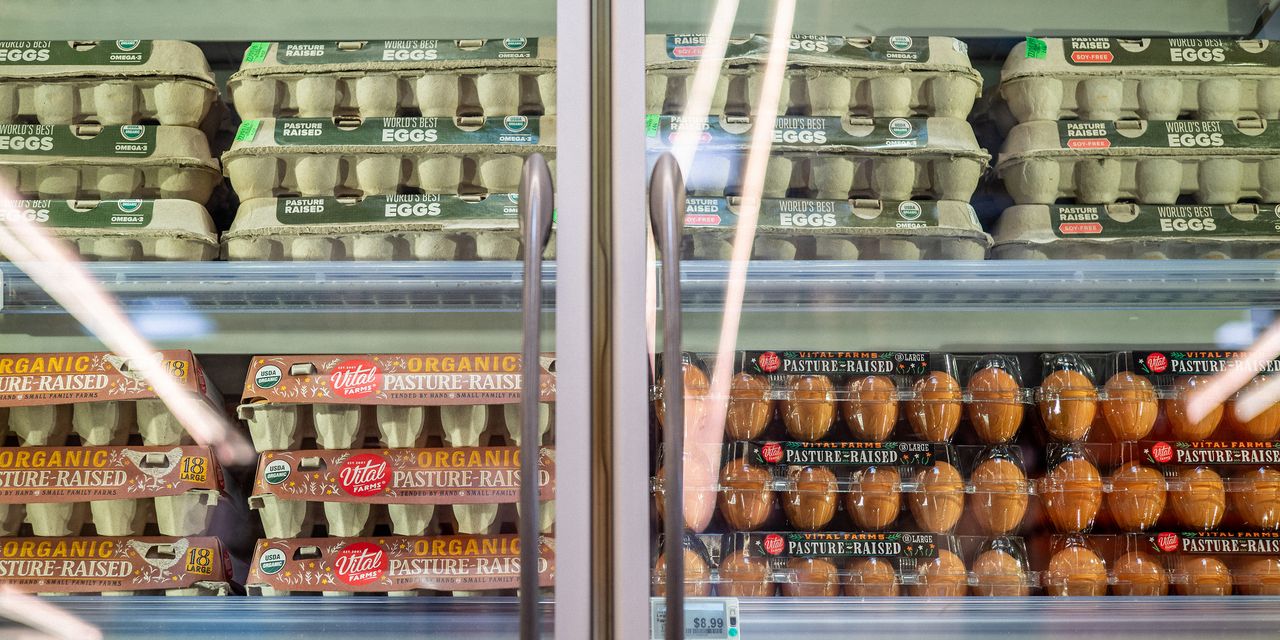The Federal Reserve’s favored measure of inflation showed that high and rising pricing haven’t been banished. That increases the likelihood that the U.S. central bank will opt for another interest-rate increase in June.
The government’s personal-consumption expenditures price index, released Friday morning, showed that prices rose 0.4% in April on a month-over-month basis, slightly more than anticipated by the consensus forecasts of economists surveyed by FactSet. The annual headline inflation rate rose to 4.4% from the 4.2% rate recorded in March, the Bureau of Economic Analysis reported.
The core PCE reading, which excludes more volatile food and energy prices, increased 0.4% on a month-to-month basis, up from a 0.3% increase in March, the Bureau of Economic Analysis reported. Annually, core PCE is up 4.7%, compared with a 4.6% increase recorded in March. Economists had expected that core inflation would hold steady last month.
The higher PCE reading was driven, in part, by rising service costs. Prices for services—including medical care, transportation, and hospitality—climbed 0.4% in April, and at an annual pace of 5.5%. Goods prices rose 0.3% on a monthly basis and are up 2.1% from a year ago.
“That is not what the Fed wants to see,” Andrew Patterson, senior international economist at Vanguard, told Barron’s on Friday. “The pickup in services…is not good news for the Fed in terms of bringing inflation back down to target.”
April’s PCE report provided no real relief to Fed officials, as it showed inflation is still more than twice as high as the central bank’s target rate of 2%. Members of the Federal Open Market Committee, the Fed’s policymaking arm, have already acknowledged that inflation remains persistently “too high,” according to the minutes from the Fed’s May 2-3 policy meeting, released Wednesday. Several officials noted that the central bank’s progress in bringing inflation back down to the 2% annual target could remain “unacceptably slow.”
The latest rise in inflation could provide ammunition needed for at least some members of the Federal Open Market Committee to push for further rate hikes during the June 13-14 meeting. The odds of a quarter-point interest-rate hike at the next meeting increased to 56% after the report, according to the CME FedWatch Tool.
Yet, there is also uncertainty among committee members as to how much more policy tightening “may be appropriate” as the Fed weighs the benefits of reining in inflation against the threats posed by recent bank instability and slower economic growth.
The Bureau of Economic Analysis revised upward on Thursday the growth of first-quarter U.S. gross domestic product, noting that GDP increased at an annual rate of 1.3% in the period. That is below what experts tend to consider the ideal GDP growth rate of between 2% and 3%, but higher than economists’ estimates of 1.1% growth.
The path toward bringing down inflation was “always going to be a bumpy ride,” Patterson said, predicting the June 13-14 FMOC meeting will result in another interest-rate hike. “We feel like the Fed, before they pause, really needs to emphasize their resolve in terms of bringing inflation down.”
The latest numbers indicate that the central bank’s job of cooling inflation isn’t over, wrote George Mateyo, Key Private Bank’s chief investment officer. “The Fed’s summer vacation may need to be cut short as consumers’ vacations fuel spending,” Mateyo said. “The bottom line is inflation remains an unresolved issue for the Fed.”
Fed officials tend to prefer the PCE inflation measure, which tracks direct and indirect purchases by all U.S. households and nonprofits, because it has proved more consistent than the consumer price index over the longer term. The CPI sources data from urban consumers.
Additionally, the CPI puts more weight on shelter costs, including rent and the owners’ equivalent rent, which have contributed to higher inflation readings in recent months due to higher housing costs.
But the PCE isn’t the only measure the Fed considers in decision-making around rate hikes. The FOMC’s next decision will also hinge on what happens with Washington’s debt-limit deliberations; the coming employment report for April, and the next CPI report, to be released ahead of the June meeting’s conclusion.
“We’re going to be very focused on payrolls next week and CPI the week after. If you’re looking for [reasons to] hike versus pause—this was supportive of a hike, but that is not a foregone conclusion,” Patterson said.
Write to Megan Leonhardt at [email protected]
Read the full article here


